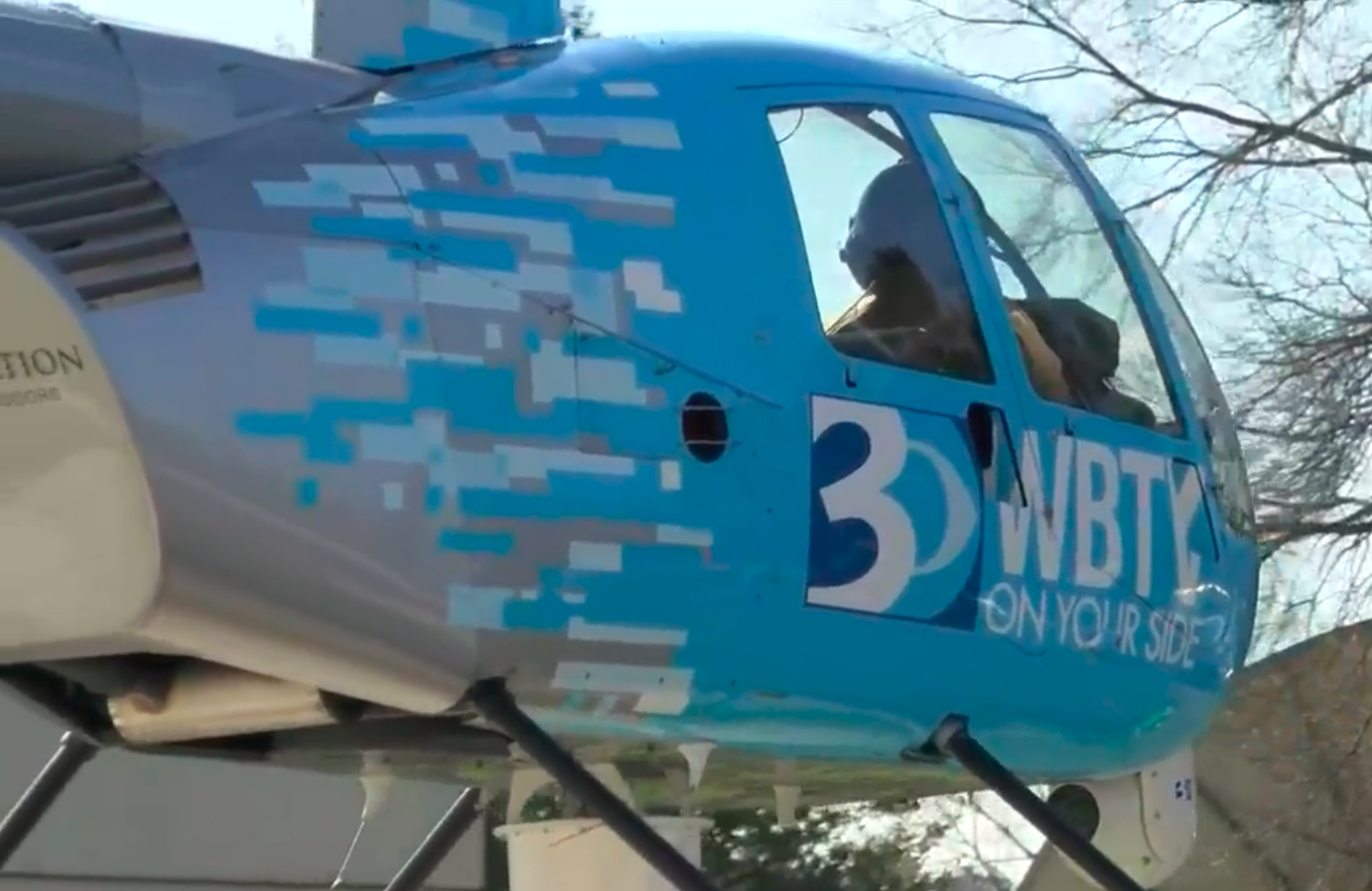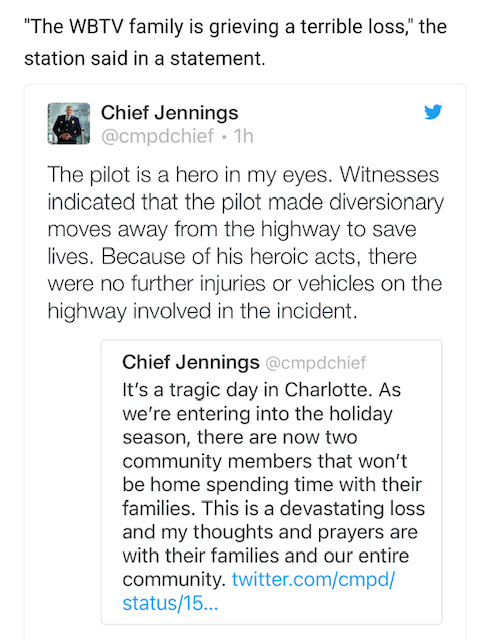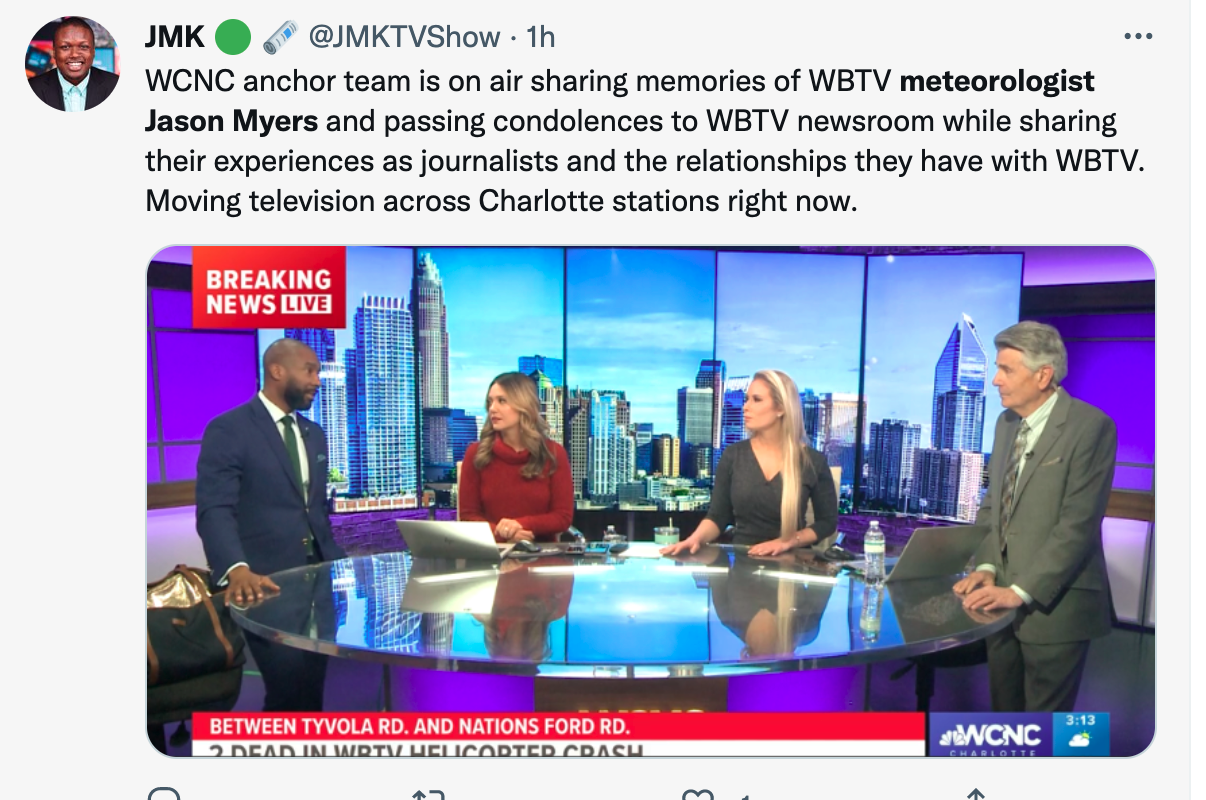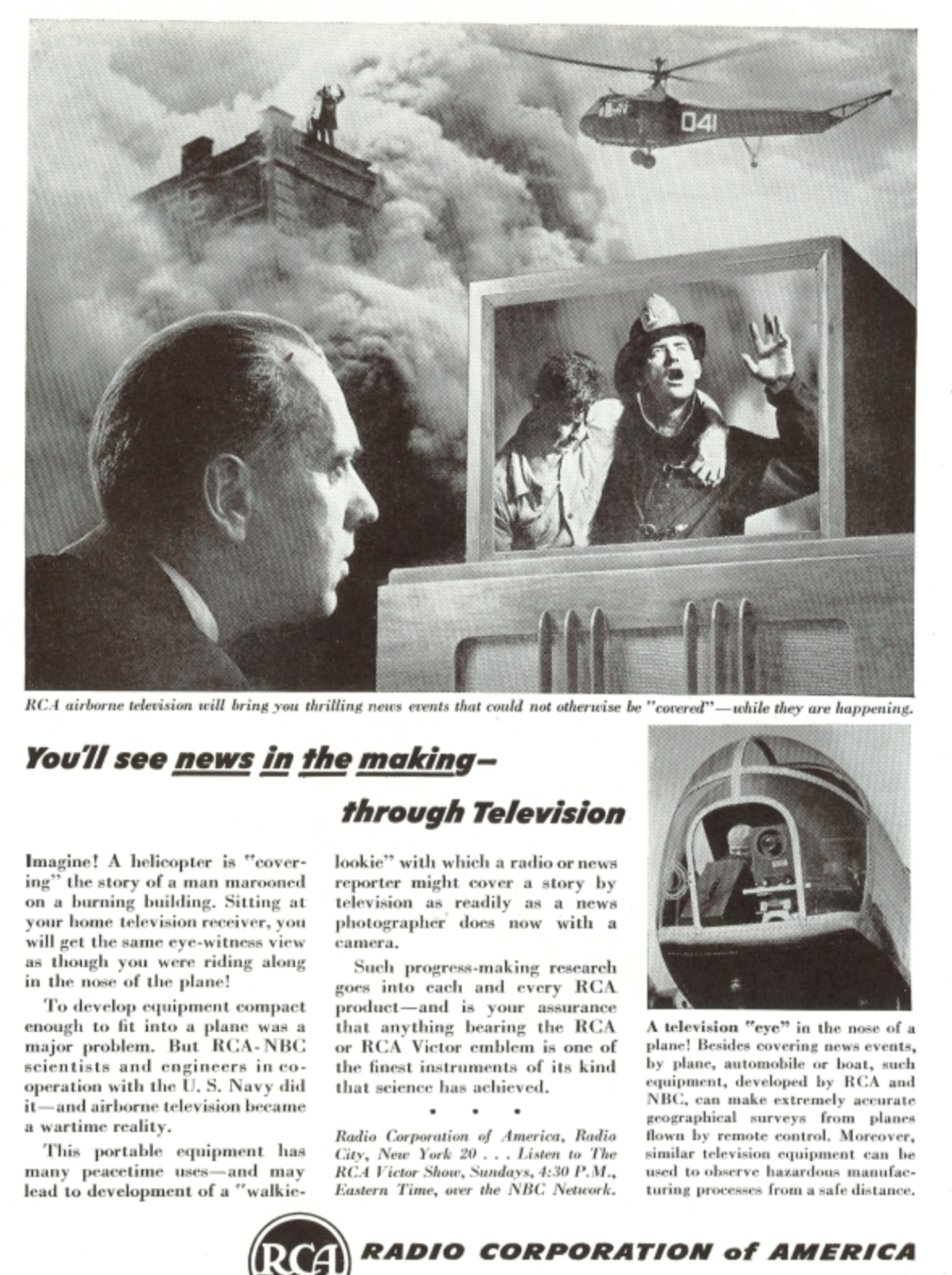Police in Charlotte, North Carolina, say that a WBTV pilot acted heroically when he guided his helicopter away from traffic as the aircraft crashed and killed both the pilot, Chip Tayag, and a station meteorologist, Jason Myers. The crash occurred just after noon on Tuesday near Interstate 77.
“It took us a while to figure out it was ours,” anchor Jamia Boll said Tuesday. “There are not that many helicopters in Charlotte. The hard reality set in.”
Reporter Shevaun Bryan said as soon as the newsroom got word that a chopper was down, a panic set in.
“It seems the pilot that was operating the aircraft made some diversionary moves to avoid hitting traffic,” Charlotte-Mecklenburg police Chief Johnny Jennings said. “Fortunately, there were no vehicles involved in it and I think as we move forward, to me it looks like a heroic incident where the pilot tried to avoid injuring anyone else and putting anyone else in danger. And if that truly is the case, then that pilot truly is a hero in my eyes to make the that the safety and security of those that were driving on the road were not in jeopardy.”
A witness told WCNC TV, “I think that he absolutely knew that he was gonna have to put that down,” the man said. “He did his best to put it down. … Whoever the pilot was, did their best to put that thing down where it wasn’t going to injure a lot of people, and in that respect, they did a fabulous job.” He continued, “It looked very aggressive,” he said. “He’s really banking that helicopter around to get a shot of something. But then on his second pass, I knew that something was not right. And he just continued that steep bank until boom, he disappeared out of sight.”
WBTV issued a statement:

(WBTV)
Shaken colleagues who were reporting the crash on the air said, “It is a heavy day at WBTV.”
The station said it held back from reporting about the crash until just after 3 p.m. until the employee’s families had been notified.
Boll said, while breaking the sad news, “The words are hard to come by, folks. We have been holding on to this for a while. I see their pictures here today, I walked in this morning, it was just after 11 o’clock, and Chip was on the pad outside the station inside the helicopter. He had just landed and he was about to go back up. And he was going to pick up Jason and they were going to head out. And those smiles you see right there on the screen, those are those two people. Every single day in this newsroom, Chip would wave at you, say ‘hello,” ask you how you are doing.” He added, “Jason Myers, he would bound through this newsroom with incredible energy and smiles and just cared about everybody.”
WBTV’s Molly Grantham added, “You often see us hashtag post #wbtvfamily, we are a family. And we feel lucky to be with people that we work so closely with, in such an intense career and to like our co-workers as family.” She said, “Chip is a long long-time pilot for WBTV, he is actually through a contractor company, but he has been here a long time and he is an experienced pilot. And many of us have been in that helicopter with Chip.”
The helicopter was a 1999 R44 Robinson aircraft. In January 2020, Tayag was on the air after NBA star Kobe Bryant died in a chopper crash. Tayag explained how pilots make decisions in bad weather.

A 2020 photo shows the WBTV helicopter that crashed Tuesday. (WBTV)
Colleagues said Jason was a father of four young children. He was formerly a meteorologist in Lexington, Kentucky, and moved to Charlotte to be closer to his North Carolina family.
Chip was married. Colleagues said “he loved what he did. He gave us happy moments in this community and helped us get through the sad moments, like funerals.”
Bryan said, “He knew every little thing about that chopper. He was so meticulous.” She said, “This guy is scientific with it, he loved that chopper.”
Everyone from the Panthers NFL team to local police and the National Weather Service issued caring statements about the tragedy.

Charlotte-Mecklenburg police Chief Johnny Jennings tweeted his admiration for helicopter pilot Chip Tayag after Tavag and meteorologist Jason Myers died in a helicopter crash Tuesday. (Twitter via WBTV)
As often happens after events like this, other stations spent airtime reflecting on the loss. Usually local TV stations are heated competitors, except in times like this.

(Twitter)
News helicopter crashes are rare these days, partly because there are fewer aircraft in the air than there were in the early 2000s, but also because some high-profile crashes led to newsrooms increasing their safety standards. A 2007 chopper collision in Phoenix sparked an industry conversation about news helicopter safety. Those two helicopters were two of five aircraft covering a police chase.
In 2009, the National Press Photographers Association endorsed recommendations that news helicopter pilots no longer report live while they are flying the helicopter, which was not uncommon at the time. In many markets, prior to the 2007 Phoenix crash, pilots flew the aircraft while also delivering traffic reports on air. The NPPA declared that “pilot/reporters who appear live on camera in the sky should not do so unless accompanied by a co-pilot or a trained observer on board to help avoid collisions.”
The 2007 crash also resulted in other news chopper safety precautions, including painting a highly visible stripe pattern on the helicopters’ rotors so that they may more easily be seen from above and adding bright strobe lights to avoid a collision with other aircraft.
In 2009, a TV news enthusiast compiled a list of nearly 120 TV stations around the country that had news helicopters. You can see the list here.
More recently, TV stations began pulling their helicopters to save money and the net effect is there are far fewer aircraft in the sky. In 2017, The Indianapolis Business Journal said,
It costs $400,000 to $750,000 to buy a helicopter suitable for TV news coverage and another $50,000 to $100,000 to outfit it with high-definition broadcast equipment. It costs $400 to $500 an hour to fly it and another $125,000 or so a year for a pilot.
The history of news aircraft stretches back to 1940 when reporter Raymond Forrest reported from an airplane above New York City. In 1946 RCA imagined retired military helicopters delivering news on TV.

(Eye in the Sky – The Story of Live Airborne Television Broadcasting by Ed Sharpe – SMECC)
While it was common for big markets to send four or five helicopters in the air every day, over the last decade, stations in major markets like Chicago, Denver, Philadelphia and Phoenix have started sharing a helicopter.
“If you’re all showing the same footage from the same helicopter, you have to ask yourself what the real value is,” a Denver station news director who asked not to be identified told the Indiana Business Journal.
Some stations have turned to drones for the high-wide shots that they used to fly choppers to capture. But drones can’t get crews to a breaking scene faster and airspace is often limited around emergencies. In 2017, drones delivered stunning images of Houston flooding after a hurricane and a new era of aerial journalism began to grow.







